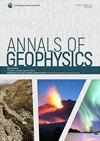通过转换成SEG-Y格式来恢复古老的地震反射剖面:来自意大利境内公开数据的案例研究
IF 1.2
4区 地球科学
Q3 GEOCHEMISTRY & GEOPHYSICS
引用次数: 2
摘要
近几十年来,地质建模有了显著的发展,依靠硬件和软件不断增长的潜力来管理和整合大量的2D-3D地下地球物理数据集。因此,数字化和与其他形式的数据的整合通常可以提高对地质系统的理解,即使是使用所谓的古着或历史数据。自上世纪60年代以来,地震反射数据被广泛采集,主要用于油气勘探,产生了大量数据。通常情况下,这些数据都是为私人商业用途,相对来说是不可用于研究的。然而,随着时间的推移,世界上许多国家的大量古地震反射数据现在可以通过基于时间的去分类方案公开获得。这些数据对现代地质研究具有巨大的潜力,通过用现代方法重新解释,为提高地质认识提供了机会。然而,这些古老数据的一个缺点是,它们通常只能以模拟(纸张,光栅)格式提供。然后,对这些数据进行矢量化是释放其研究潜力的重要步骤。2018年,INGV建立了SISMOLAB-3D基础设施,主要致力于分析地震反射剖面和测井等数字地下数据,建立2D-3D地质模型,主要用于地震构造学、地震危险性评估和地质资源应用。在本文中,我们讨论了Sopher于2018年首次发布的WIGGLE2SEGY代码的鲁棒性,重点关注意大利境内不同构造和地球动力学背景的示例。我们将SEG-Y转换方法应用于与已停止勘探许可相关的陆上和海上栅格地震剖面,并将结果与其他已发表的SEG-Y数据档案进行比较。这样的方法导致数字SEG-Y文件与前所未有的质量和细节。该方法的系统应用将允许在意大利建立一个全面的数字SEG-Y地震剖面数据集,从而与科学界扩展和共享INGV SISMOLAB-3D端口组合,以促进创新和先进的科学分析。本文章由计算机程序翻译,如有差异,请以英文原文为准。
Revitalizing vintage seismic reflection profiles by converting into SEG-Y format: case studies from publicly available data on the Italian territory
In recent decades, geological modeling has significantly evolved, relying on the growing potential of hardware and software to manage and integrate vast datasets of 2D-3D geophysical underground data. Therefore, digitization and integration with other forms of data can often improve understanding of geological systems, even when using so-called vintage or historical data. Seismic reflection data have been extensively acquired mainly for hydrocarbon exploration since the 60s generating large volumes of data. Typically, these data have been for private commercial use and are relatively unavailable for research. However, with time, large volumes of vintage seismic reflection data in many countries worldwide are now becoming publicly available through time-based de-classification schemes. Such data have a great potential for modern-day geo-research, unleashing opportunities to improve geological understanding through re-interpretation with modern methods. However, a downside of these vintage data is that they are often only available in analog (paper, raster) format. The vectorization of these data then constitutes an essential step for unlocking their research potential. In 2018 INGV established the SISMOLAB-3D infrastructure, which is mainly devoted to analyzing digital subsurface data, such as seismic reflection profiles and well-logs, to build 2D-3D geological models, principally for seismotectonics, seismic hazard assessment, and geo-resources applications. In this contribution, we discuss the robustness of the WIGGLE2SEGY code, firstly published by Sopher in 2018, focusing on examples from different tectonic and geodynamic contexts within Italian territory. We applied the SEG-Y conversion method to onshore and offshore raster seismic profiles related to ceased exploration permits, comparing the results with other published archives of SEG-Y data obtained from the conversion of vintage data. Such an approach results in digital SEG-Y files with unprecedented quality and detail. The system- atic application of this method will allow the construction of a comprehensive dataset of digital SEG-Y seismic profiles across Italy, thereby expanding and sharing the INGV SISMOLAB-3D port- folio with the scientific community to foster innovative and advanced scientific analysis.
求助全文
通过发布文献求助,成功后即可免费获取论文全文。
去求助
来源期刊

Annals of Geophysics
地学-地球化学与地球物理
CiteScore
2.40
自引率
0.00%
发文量
38
审稿时长
4-8 weeks
期刊介绍:
Annals of Geophysics is an international, peer-reviewed, open-access, online journal. Annals of Geophysics welcomes contributions on primary research on Seismology, Geodesy, Volcanology, Physics and Chemistry of the Earth, Oceanography and Climatology, Geomagnetism and Paleomagnetism, Geodynamics and Tectonophysics, Physics and Chemistry of the Atmosphere.
It provides:
-Open-access, freely accessible online (authors retain copyright)
-Fast publication times
-Peer review by expert, practicing researchers
-Free of charge publication
-Post-publication tools to indicate quality and impact
-Worldwide media coverage.
Annals of Geophysics is published by Istituto Nazionale di Geofisica e Vulcanologia (INGV), nonprofit public research institution.
 求助内容:
求助内容: 应助结果提醒方式:
应助结果提醒方式:


